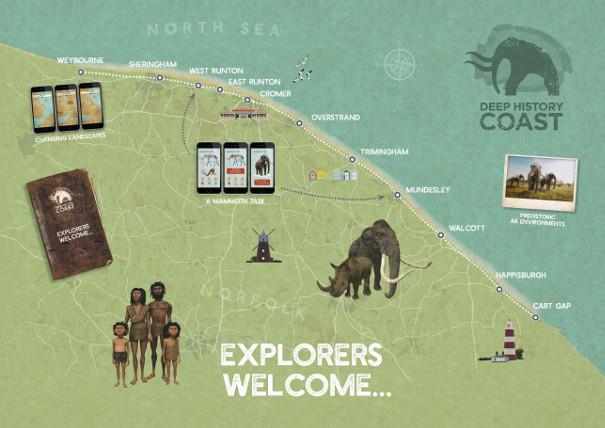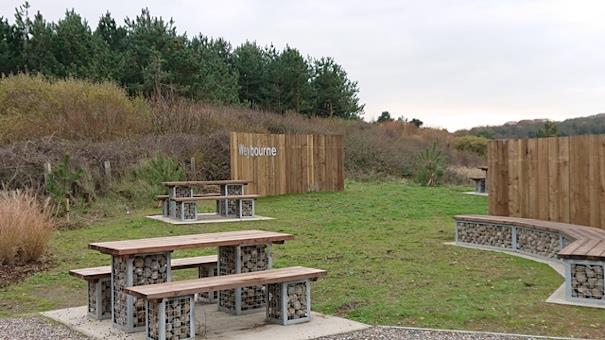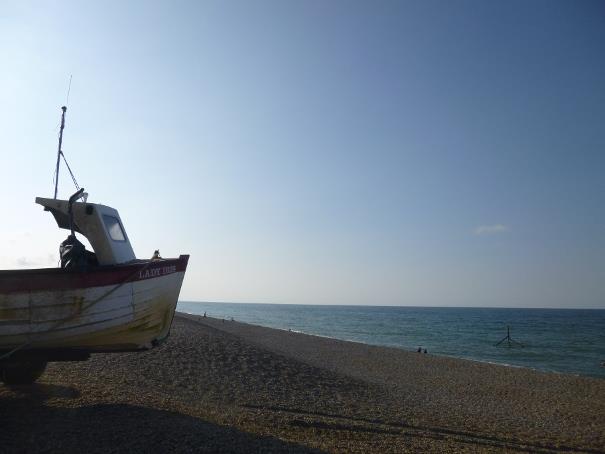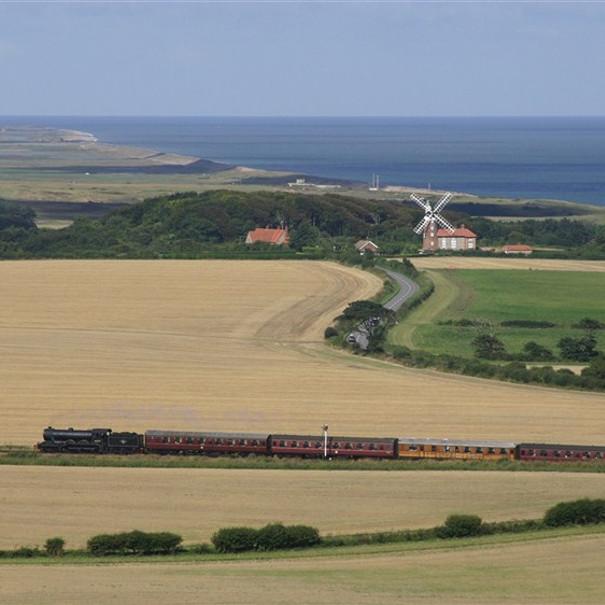North Norfolk's Deep History Coast is a 22-mile stretch of coastline between Weybourne and Cart Gap and is steeped in millions of years’ worth of history. With wonderful beaches, ideal for fossil and artefact hunting and a fascinating Discovery Trail, with fact revealing Discovery Points along the way, there is a lot to discover. There is a downloadable Deep History Coast App (free to download from app stores) for the trail with interactive activities, quizzes and information linking with information points along the route.
Through the app, you’ll be able to see the past come back to life and find out what life in Doggerland was like through the eyes of a hominin family, watch animals from 800,000 years ago roam the land and find out the names of any fossils you may find. Discovery points are located at each of the main villages and towns. Here we focus on Weybourne.

ABOUT WEYBOURNE
Weybourne is where north Norfolk's low, shingly coastline rears up out of the sea with a back drop of steep-edged cliffs studded with ancient fossils and flints. It’s here where a 100-million-year-old chalk reef, the biggest in Europe, emerges under the water from the clay blanket that covers it further west.
Since the land emerged at the end of the last Ice Age the sea has been eating it away, taking fields, farms and cottages with it. At the Discovery Point in Weybourne, the app will be triggered to reveal Deep History related to that time, with augmented reality features. You will see the Cromer Forest Bed stretching for miles and as you walk, you will be on a landscape that started to form two million years ago as the bed of an ancient river.
Meet the augmented reality Hominin family who will chat to you about where you are standing. When the Hominins lived there it wasn’t a coast; the land stretched for miles across to Europe and animals such as the fierce scimitar toothed cat roamed the land.

THE HISTORY OF WEYBOURNE
The name Weybourne derives from “felon’s stream” and may have been a place where criminals were drowned. The coastline has a steeply shelving beach, with deep water to the shoreline which has made it open to invasion in both the world wars. Many wartime pillboxes still remain.
This landscape also made it a well-used location for smuggling. The coast between Sheringham and Weybourne was popular for landing goods because ships could anchor closer to the shore than anywhere else in the area. There was also a convenient gap in the cliffs through which goods could be easily transported.
Weybourne is mentioned in the Domesday book as Wabrunna. In the grounds of 15th century All Saints village church, you will find the ruins of an Augustinian priory and just on the village outskirts, stands a former windmill, a well-known landmark.

THINGS TO DO
Weybourne is home to a quiet shingle beach with a backdrop of cliffs running all the way to Happisburgh, while the beach stretches east to Blakeney Point. A three-mile walk along the top of the cliffs will take you to Sheringham beach. The deep waters at Weybourne make it popular with beach anglers.
Nearby is the popular Muckleburgh Collection, the largest privately-owned collection of tanks, armoured cars and other military vehicles used in wars across the globe. There is a shop, Weybourne Stores, and The Ship public house, which serves ales and hot food most lunchtimes and evenings. A few minutes’ walk from the centre is the Maltings Hotel, which services bar and restaurant meals and provides accommodation.
The North Norfolk Railway Poppy Line runs from Sheringham through Weybourne to Holt, to the east of Weybourne and passes through the preserved village station, which also houses a locomotive shed with a carriage maintenance and restoration centre. The main station, which was built in 1900, was used as the location for the filming of the Dad’s Army episode, The Royal Train, and is frequently used by film-makers and artists. On the station there is a small shop, buffet and picnic area. The railway offers a 10.5-mile round trip by steam train (or vintage diesel trains on some journeys).
Surrounding Kelling and Weybourne are two Areas of Outstanding Natural Beauty, Muckleburgh Hill and Kelling Heath. The heaths contain a nature trail, a network of paths and amazing views of the surrounding area. Adjacent to Weybourne, is the National Trust's Sheringham Park with rhododendrons, azaleas, rare trees and mature woodlands as well as fantastic coastal views.

Related
Comments
Comments are disabled for this post.






